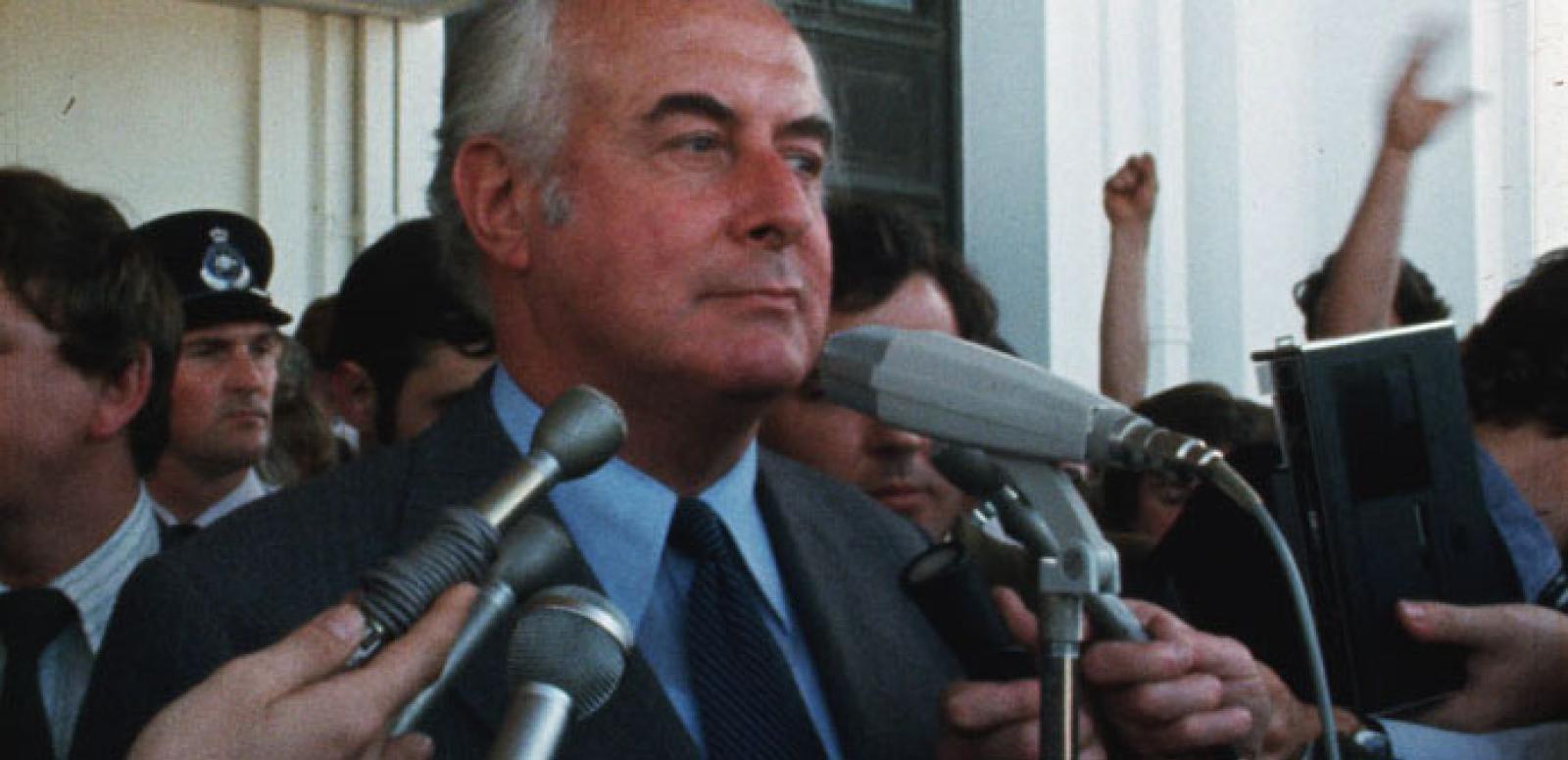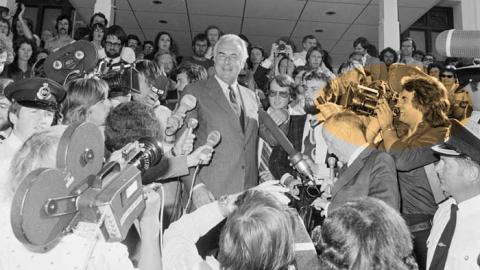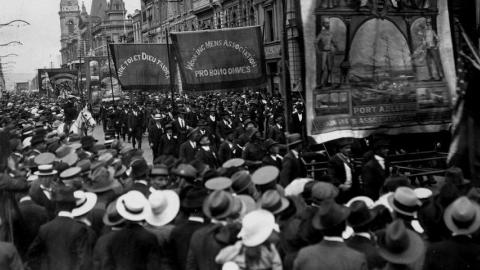Fifty years on from the events of 11 November 1975, Johnny Milner revisits the day Gough Whitlam was dismissed as Prime Minister, and the recordings that captured a defining moment in Australian political history.
Great political speeches endure because they capture not just the moment they were spoken, but the emotion and rhythm of history. In film and sound, their power deepens, every word and inflection preserving a nation in motion.
Few images in Australian political life embody that truth more vividly than Gough Whitlam’s Dismissal speech on the steps of Old Parliament House in 1975. Governor-General John Kerr’s decision to dissolve both houses of Parliament and sack the Prime Minister triggered a constitutional thunderclap. Yet it was Whitlam’s response – fierce, eloquent, bitter – that seared itself into the national memory, for supporters and opponents alike.




